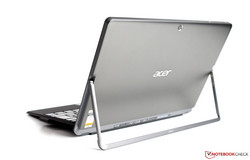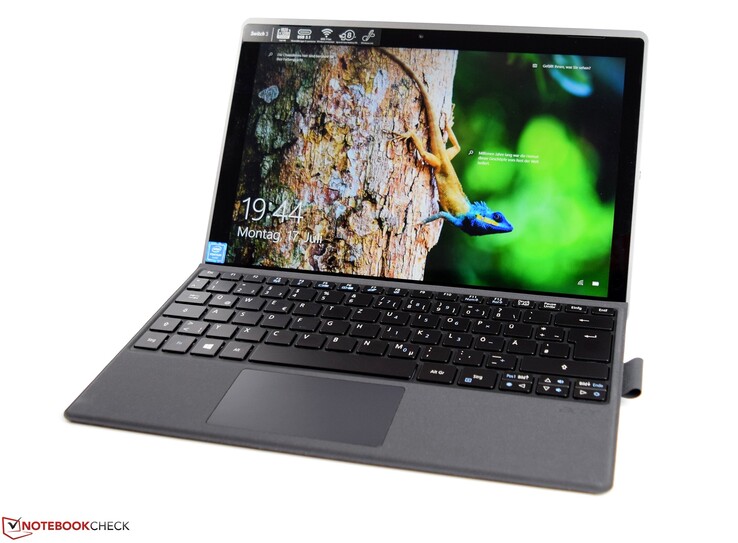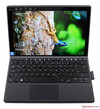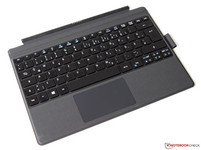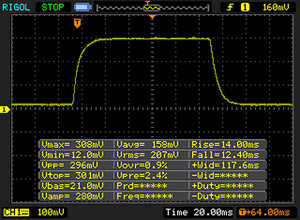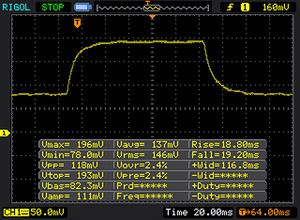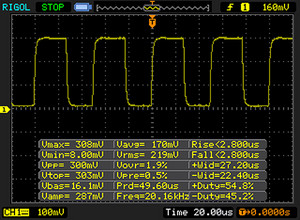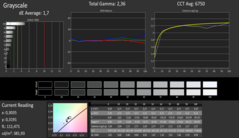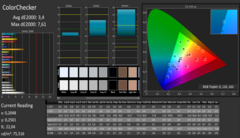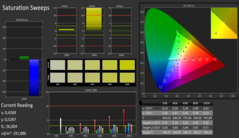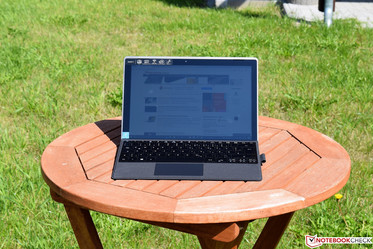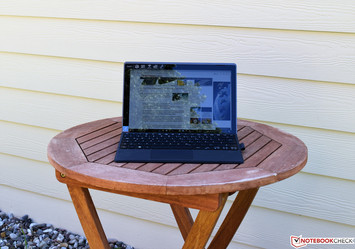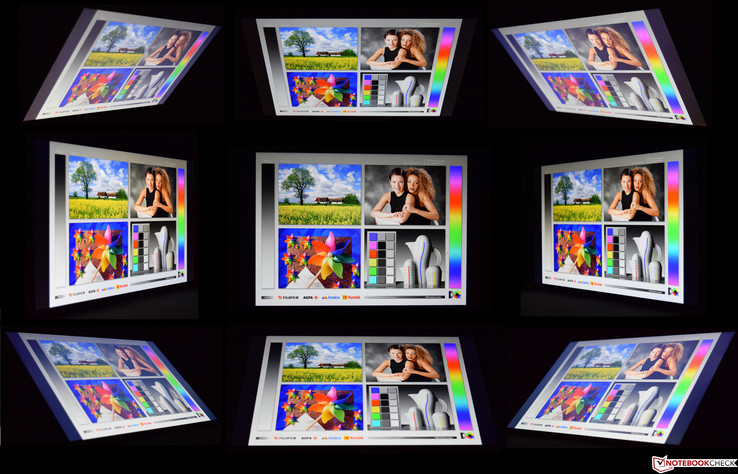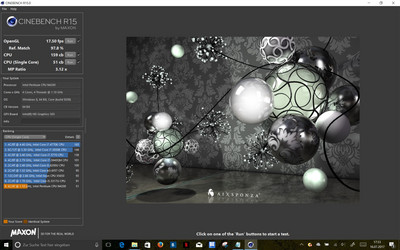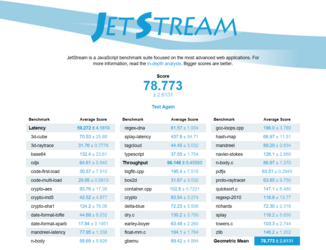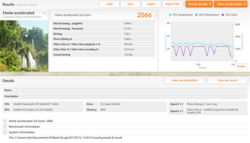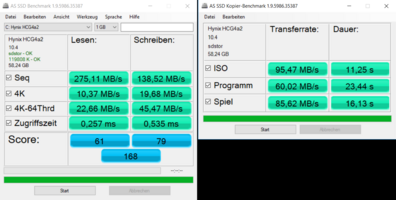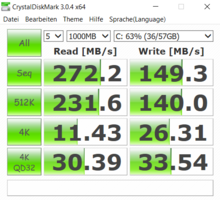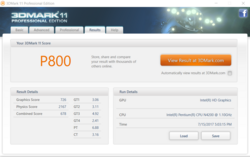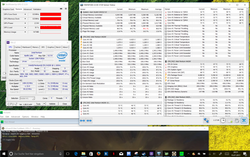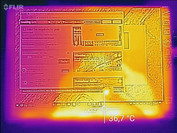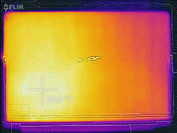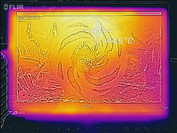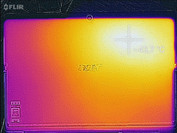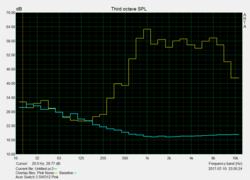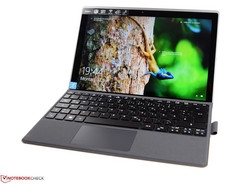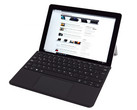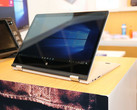Acer Switch 3 SW312 (Pentium N4200) Convertible Review

For the original German version, click here.
The Acer Switch 3 is a 12-inch convertible that is supposed to work both as a business device and for private use. Convertibles are very versatile and their components' performance is constantly being improved. Our test device is equipped with a small Apollo Lake SoC (Intel Pentium N4200) and 4 GB DDR3 RAM. The flash storage device can hold 64 GB. The Acer Switch 3 can easily be connected to the provided keyboard dock and then used in laptop mode. The Acer Switch 3 is available for $440 in our test configuration.
There are not a lot of differences between the various configurations of the Acer Switch 3. One model is based on the slightly slower Intel Celeron N3350 and is an entry-level device. There are currently no other options for display, RAM or storage device.
We have chosen several devices within the same price and performance range to be our comparison devices for this review. There is an overview of all devices in the table below.
| Asus VivoBook Flip 12 | Medion Akoya P3401T | Acer Spin 1 | Lenovo IdeaPad Miix | |
| CPU | Intel Pentium N4200 | Intel Core m5-6Y54 | Intel Celeron N3450 | Intel Atom x5 Z8350 |
| GPU | Intel HD Graphics 505 | Intel HD Graphics 515 | Intel HD Graphics 500 | Intel HD Graphics 400 |
| Display | 11.6 inches 1366 x 768 | 12.5 inches 1920 x 1080 | 11.6 inches 1920 x 1080 | 10.1 inch 1920 x 1200 |
| RAM | 4 GB DDR3 | 8 GB LPDDR3 | 4 GB DDR3 | 4 GB DDR3L |
| Storage | 1 TB (HDD) | 128 GB (SSD) | 500 GB (HDD) | 128 GB (SSD) |
Case & Connectivity
Acer's designers have done a good job and have created a very stylish device. Its subtle highlights create an elegant case; the matte titanium gray suits the Acer Switch 3 and also has a good feel. Stability is good but not perfect - the tablet can be warped a little with some physical effort. The keyboard dock, which simultaneously acts as a display cover during transport, has a black, roughened surface. This gives a very good impression at first but quickly collects dust, which requires some effort to remove.
The tablet has a good size of 29.5 x 20.1 cm (11.6 x 7.9 in) and does not seem bulky. We also like the well-dimensioned bezels which make it easy to hold the tablet without touching the display. The Acer Switch has a metal stand which can be positioned into any desired angle and is especially useful in laptop mode.
All of the ports the Acer Switch 3 has to offer are positioned on its left side. As the kickstand already takes up half of the available space, the ports have to fit into the leftover space. It's great that the device has a USB Type-C port, even though it only offers one other USB 3.0 port. The Acer Switch 3 has a microSD-card slot with which you can expand the low internal storage of 64 GB.
Ports
| SD Card Reader | |
| maximum SDCardreader Maximum Transfer Rate | |
| average SDCardreader Average Transfer Rate |
The main communications module is the dual-band wireless AC 7265 module from Intel, which also supports Bluetooth 4.0. The Acer Switch 3 made first place for reception rates with 560 MBit/s. We actually measured better transmission rates of 573 MBit/s, but here the Medion Akoya still managed to beat our test unit with 663 MBit/s. Overall, the Acer Switch 3 offers good and reliable results. There were no issues regarding Wi-Fi connection during our test period. You can connect the device via cable with the help of a USB adapter.
Input Devices
The Acer Switch 3 is provided with a keyboard dock that can be connected to the tablet via a magnetic hinge. The Switch 3 then works like a laptop. We did miss keyboard backlighting, which also affected our ratings of the input devices. Apart from this, the chiclet keyboard does a good job. Short travel and a clear pressure point make typing comfortable and noise from typing is rather quiet. Only the space bar seems a little rickety, but that did not affect our overall impression too much.
The ClickPad, which is positioned immediately below the space bar, works fine. It has a smooth surface and fingers can glide easily, but click noises are clearly audible.
Another input device is the 12-inch touchscreen, which offers an ample work surface and reacts well to inputs with a finger. You can also use an Acer Active Stylus to make inputs even more precise. The pen can be stored on the right side of the keyboard dock.
Display
The 12.2-inch IPS panel has a resolution of 1920x1200 pixels. Its reflective surface makes working in bad lighting conditions a little difficult, even though it has an average brightness level of 341 cd/m², which is not bad. The elevated black value (0.23) also means contrast is mediocre at 774:1. Brightness distribution is suboptimal at 85% and the screen also suffers from visible clouding and PWM, although the measured PWM frequency of 20,000 Hz is very high.
| |||||||||||||||||||||||||
Brightness Distribution: 85 %
Center on Battery: 364 cd/m²
Contrast: 774:1 (Black: 0.47 cd/m²)
ΔE ColorChecker Calman: 3.4 | ∀{0.5-29.43 Ø4.78}
ΔE Greyscale Calman: 1.7 | ∀{0.09-98 Ø5}
91% sRGB (Argyll 1.6.3 3D)
59% AdobeRGB 1998 (Argyll 1.6.3 3D)
60.6% AdobeRGB 1998 (Argyll 3D)
87.5% sRGB (Argyll 3D)
58.8% Display P3 (Argyll 3D)
Gamma: 2.36
CCT: 6750 K
| Acer Switch 3 SW312-31-P5VG IPS, 1920x1200, 12.2" | Medion Akoya P3401T 2in1 IPS, 1920x1080, 12.5" | Asus VivoBook Flip 12 TP203NAH-BP049T IPS, 1366x768, 11.6" | Acer Spin 1 SP111-31-C79E IPS, 1920x1080, 11.6" | Lenovo IdeaPad Miix 320-10ICR Pro LTE IPS, 1920x1200, 10.1" | |
|---|---|---|---|---|---|
| Display | -33% | -31% | -23% | -16% | |
| Display P3 Coverage (%) | 68 58.8 | 42.92 -37% | 44.23 -35% | 49.67 -27% | 54.2 -20% |
| sRGB Coverage (%) | 91.2 87.5 | 64.3 -29% | 66.3 -27% | 72.6 -20% | 81.4 -11% |
| AdobeRGB 1998 Coverage (%) | 66.9 60.6 | 44.35 -34% | 45.73 -32% | 51.4 -23% | 56 -16% |
| Response Times | -6% | -3% | 4% | 9% | |
| Response Time Grey 50% / Grey 80% * (ms) | 37 ? | 40 ? -8% | 39 ? -5% | 36 ? 3% | 32 ? 14% |
| Response Time Black / White * (ms) | 25 ? | 26 ? -4% | 25 ? -0% | 24 ? 4% | 24 ? 4% |
| PWM Frequency (Hz) | 20000 ? | 19000 ? | |||
| Screen | -18% | 0% | -18% | -41% | |
| Brightness middle (cd/m²) | 364 | 392 8% | 253 -30% | 251 -31% | 251 -31% |
| Brightness (cd/m²) | 341 | 392 15% | 245 -28% | 247 -28% | 244 -28% |
| Brightness Distribution (%) | 85 | 93 9% | 65 -24% | 86 1% | 79 -7% |
| Black Level * (cd/m²) | 0.47 | 0.33 30% | 0.17 64% | 0.21 55% | 0.33 30% |
| Contrast (:1) | 774 | 1188 53% | 1488 92% | 1195 54% | 761 -2% |
| Colorchecker dE 2000 * | 3.4 | 4.99 -47% | 3.17 7% | 4.27 -26% | 5.34 -57% |
| Colorchecker dE 2000 max. * | 7.61 | 9.08 -19% | 8.13 -7% | 11 -45% | 9.91 -30% |
| Greyscale dE 2000 * | 1.7 | 4.53 -166% | 2 -18% | 3.77 -122% | 6.04 -255% |
| Gamma | 2.36 93% | 2.46 89% | 2.43 91% | 2.26 97% | 3.23 68% |
| CCT | 6750 96% | 7394 88% | 6850 95% | 6524 100% | 7491 87% |
| Color Space (Percent of AdobeRGB 1998) (%) | 59 | 41 -31% | 42 -29% | 47 -20% | 51 -14% |
| Color Space (Percent of sRGB) (%) | 91 | 64 -30% | 66 -27% | 72 -21% | 81 -11% |
| Total Average (Program / Settings) | -19% /
-19% | -11% /
-7% | -12% /
-16% | -16% /
-29% |
* ... smaller is better
Display Response Times
| ↔ Response Time Black to White | ||
|---|---|---|
| 25 ms ... rise ↗ and fall ↘ combined | ↗ 14 ms rise | |
| ↘ 12 ms fall | ||
| The screen shows relatively slow response rates in our tests and may be too slow for gamers. In comparison, all tested devices range from 0.1 (minimum) to 240 (maximum) ms. » 58 % of all devices are better. This means that the measured response time is worse than the average of all tested devices (20.2 ms). | ||
| ↔ Response Time 50% Grey to 80% Grey | ||
| 37 ms ... rise ↗ and fall ↘ combined | ↗ 18 ms rise | |
| ↘ 19 ms fall | ||
| The screen shows slow response rates in our tests and will be unsatisfactory for gamers. In comparison, all tested devices range from 0.165 (minimum) to 636 (maximum) ms. » 52 % of all devices are better. This means that the measured response time is worse than the average of all tested devices (31.6 ms). | ||
Screen Flickering / PWM (Pulse-Width Modulation)
| Screen flickering / PWM detected | 20000 Hz | ≤ 90 % brightness setting | |
The display backlight flickers at 20000 Hz (worst case, e.g., utilizing PWM) Flickering detected at a brightness setting of 90 % and below. There should be no flickering or PWM above this brightness setting. The frequency of 20000 Hz is quite high, so most users sensitive to PWM should not notice any flickering. In comparison: 53 % of all tested devices do not use PWM to dim the display. If PWM was detected, an average of 8101 (minimum: 5 - maximum: 343500) Hz was measured. | |||
The low contrast of 774:1 means that colors are rather pale. Dark scenes appear gray rather than black, which is noticeable in everyday use. The DeltaE 2000 values are good, however: compared to the other devices, the Acer Switch 3 has the largest color-space coverage (91% sRGB and 59% AdobeRGB).
The Acer Switch 3 does not like working outdoors. The high reflections make it difficult to work on the device even in shade. Not even the good screen brightness of 341 cd/m² can make up for the reflective screen.
We have given the Acer Switch 3 a "good" for its viewing angles. All nine test images can be read relatively well from all positions. Only the four corner images lag behind a little and have a slight gray film.
Performance
Our test unit is equipped with an Intel Pentium N4200 and an integrated graphics unit, the Intel HD Graphics 505. It only has 4 GB of RAM and a 64-GB SSD, which makes it suitable for working with Office and with browsers. The Acer Switch is also available with an Intel Celeron N3350, which offers slightly lower performance but should also manage the above-mentioned activities.
Processor
The Intel Pentium N4200 in our test unit has four cores and clocks between 1.1 GHz and 2.5 GHz. The real clock rate always depends on the cooling system it is combined with. Compared to its competition, the Acer Switch 3 has average performance. It should do well in its main areas of use: working with Office or surfing the web.
Find out more about Intel Pentium N4200 benchmarks here.
The Intel Pentium N4200 can definitely reach its potential even under constant load. Apart from a few exceptions, the processor often almost reaches the 160-point mark.
| JetStream 1.1 - Total Score | |
| Medion Akoya P3401T 2in1 | |
| Asus VivoBook Flip 12 TP203NAH-BP049T | |
| Acer Switch 3 SW312-31-P5VG | |
| Acer Spin 1 SP111-31-C79E | |
| Lenovo IdeaPad Miix 320-10ICR Pro LTE | |
System Performance
After the Cinebench benchmark, the Acer Switch 3 reaches a similar result in the PCMark8 benchmarks. It is just behind the Asus VivoBook Flip 12, which reached second place. The Medion Akoya with the Intel Core m5 processor was the clear winner here.
The Acer Switch 3 gave us a good impression during everyday use and worked very smoothly.
| PCMark 8 Home Score Accelerated v2 | 2066 points | |
Help | ||
Storage Devices
The storage device in the Acer Switch 3 comes from Hynix and has 64 GB of storage capacity. If you take off the space needed for the preinstalled operating system, it leaves 30 GB for the user. The flash memory's performance is average; we would have liked a better 4K read rate. Overall, the Acer Switch still makes second place after the Medion Akoya.
| Acer Switch 3 SW312-31-P5VG Hynix HCG4a2 64 GB | Medion Akoya P3401T 2in1 | Asus VivoBook Flip 12 TP203NAH-BP049T Seagate Mobile HDD 1TB ST1000LM035 | Acer Spin 1 SP111-31-C79E Toshiba MQ01ABF050 | Lenovo IdeaPad Miix 320-10ICR Pro LTE SanDisk DF4128 | |
|---|---|---|---|---|---|
| CrystalDiskMark 3.0 | 151% | -84% | -78% | -55% | |
| Read Seq (MB/s) | 272.2 | 427.6 57% | 53.9 -80% | 109.1 -60% | 92.7 -66% |
| Write Seq (MB/s) | 149.3 | 286.5 92% | 66.4 -56% | 107.3 -28% | 54.5 -63% |
| Read 512 (MB/s) | 231.6 | 324.1 40% | 22.62 -90% | 35.89 -85% | 68.6 -70% |
| Write 512 (MB/s) | 140 | 121.8 -13% | 67.3 -52% | 45.28 -68% | 39.86 -72% |
| Read 4k (MB/s) | 11.43 | 28.11 146% | 0.378 -97% | 0.482 -96% | 6.705 -41% |
| Write 4k (MB/s) | 26.31 | 41.68 58% | 0.263 -99% | 1.037 -96% | 8.555 -67% |
| Read 4k QD32 (MB/s) | 30.39 | 249.2 720% | 0.998 -97% | 1.003 -97% | 32.71 8% |
| Write 4k QD32 (MB/s) | 33.54 | 68.8 105% | 0.518 -98% | 1.043 -97% | 11.5 -66% |
Graphics
The Intel HD Graphics 505 takes care of the graphics department. Its maximum clock rate is 750 MHz, which limits the graphics unit to low-end applications. The Intel HD Graphics 505 does not have its own memory, which means that it, too, relies on the DDR3 RAM. Again, the Acer Switch 3 made second place after the Medion Akoya in 3DMark 11.
Find out more about the Intel HD Graphics 505 and its benchmarks here.
| 3DMark 11 Performance | 800 points | |
Help | ||
Gaming Performance
The performance of the Intel HD Graphics 505 is not good enough to display demanding 3D games smoothly, but the Acer Switch 3 should manage simple browser games.
| low | med. | high | ultra | |
|---|---|---|---|---|
| BioShock Infinite (2013) | 24.6 | 14.2 | 10.9 |
Emissions & Energy Management
System Noise
The Acer Switch 3 has passive cooling only, so there is no fan noise. We did not hear any electronic devices when accessing data.
Temperature
The Acer Switch 3 does not heat up particularly despite passive cooling. Even under load the device remains relatively cool at 39.4 °C (~102.9 °F), which means you should have no problems using the device on your lap.
The processor started off at a maximum clock rate of 2.4 GHz during our stress test, but it dropped down to between 1.5 and 1.6 GHz after only a few seconds. It kept up this clock rate for the remainder of the test period (one hour) and heated up to 73 °C (~163 °F). This stress test is an extreme scenario that never occurs during everyday use. Therefore, the small SoC will very rarely remain at this maximum temperature for a prolonged period.
In the subsequent 3DMark 11 run our test unit had 200 points less than before.
(+) The maximum temperature on the upper side is 39.4 °C / 103 F, compared to the average of 35.4 °C / 96 F, ranging from 19.6 to 60 °C for the class Convertible.
(+) The bottom heats up to a maximum of 38.6 °C / 101 F, compared to the average of 36.8 °C / 98 F
(+) In idle usage, the average temperature for the upper side is 31 °C / 88 F, compared to the device average of 30.3 °C / 87 F.
(±) The palmrests and touchpad can get very hot to the touch with a maximum of 36 °C / 96.8 F.
(-) The average temperature of the palmrest area of similar devices was 27.9 °C / 82.2 F (-8.1 °C / -14.6 F).
| Acer Switch 3 SW312-31-P5VG Pentium N4200, HD Graphics 505 | Medion Akoya P3401T 2in1 6Y54, HD Graphics 515 | Asus VivoBook Flip 12 TP203NAH-BP049T Pentium N4200, HD Graphics 505 | Acer Spin 1 SP111-31-C79E Celeron N3450, HD Graphics 500 | Lenovo IdeaPad Miix 320-10ICR Pro LTE Z8350, HD Graphics 400 (Braswell) | |
|---|---|---|---|---|---|
| Heat | 10% | -13% | -2% | 7% | |
| Maximum Upper Side * (°C) | 39.4 | 38.1 3% | 45.2 -15% | 38.5 2% | 36.6 7% |
| Maximum Bottom * (°C) | 38.6 | 41.7 -8% | 50.4 -31% | 46.4 -20% | 38.9 -1% |
| Idle Upper Side * (°C) | 36.5 | 27.9 24% | 35 4% | 29.8 18% | 30 18% |
| Idle Bottom * (°C) | 30.2 | 24.1 20% | 33.3 -10% | 32.4 -7% | 29.6 2% |
* ... smaller is better
Speakers
The two speakers are positioned at the top of the display. Voices can be understood well, although highs are a little overpowering at maximum volume, which can become uncomfortable. The same can be said for music and films. We would recommend connecting an external sound system via the combined audio jack.
Acer Switch 3 SW312-31-P5VG audio analysis
(-) | not very loud speakers (63 dB)
Bass 100 - 315 Hz
(-) | nearly no bass - on average 28.4% lower than median
(+) | bass is linear (5.1% delta to prev. frequency)
Mids 400 - 2000 Hz
(±) | reduced mids - on average 6.7% lower than median
(±) | linearity of mids is average (14.4% delta to prev. frequency)
Highs 2 - 16 kHz
(+) | balanced highs - only 2.4% away from median
(+) | highs are linear (5.6% delta to prev. frequency)
Overall 100 - 16.000 Hz
(-) | overall sound is not linear (33.2% difference to median)
Compared to same class
» 93% of all tested devices in this class were better, 1% similar, 6% worse
» The best had a delta of 6%, average was 20%, worst was 57%
Compared to all devices tested
» 92% of all tested devices were better, 1% similar, 7% worse
» The best had a delta of 4%, average was 24%, worst was 134%
Acer Spin 1 SP111-31-C79E audio analysis
(-) | not very loud speakers (68 dB)
Bass 100 - 315 Hz
(±) | reduced bass - on average 13.2% lower than median
(+) | bass is linear (6.2% delta to prev. frequency)
Mids 400 - 2000 Hz
(+) | balanced mids - only 2.9% away from median
(+) | mids are linear (6% delta to prev. frequency)
Highs 2 - 16 kHz
(+) | balanced highs - only 4.3% away from median
(+) | highs are linear (6.4% delta to prev. frequency)
Overall 100 - 16.000 Hz
(±) | linearity of overall sound is average (17.5% difference to median)
Compared to same class
» 33% of all tested devices in this class were better, 8% similar, 59% worse
» The best had a delta of 6%, average was 20%, worst was 57%
Compared to all devices tested
» 33% of all tested devices were better, 8% similar, 59% worse
» The best had a delta of 4%, average was 24%, worst was 134%
Frequency diagram in comparison (checkboxes can be turned on/off)
Power Consumption
The Acer Switch 3 consumes between 4.1 and 9.8 watts while idling, which is not very sparing. The test unit also needs quite a bit more power than the Acer Spin 1 or the Lenovo IdeaPad Miix 320, for example, with an average consumption of 18.9 watts. The power supply has a maximum output of 45 watts, which is more than enough.
| Off / Standby | |
| Idle | |
| Load |
|
Key:
min: | |
| Acer Switch 3 SW312-31-P5VG Pentium N4200, HD Graphics 505, Hynix HCG4a2 64 GB, IPS, 1920x1200, 12.2" | Medion Akoya P3401T 2in1 6Y54, HD Graphics 515, , IPS, 1920x1080, 12.5" | Asus VivoBook Flip 12 TP203NAH-BP049T Pentium N4200, HD Graphics 505, Seagate Mobile HDD 1TB ST1000LM035, IPS, 1366x768, 11.6" | Acer Spin 1 SP111-31-C79E Celeron N3450, HD Graphics 500, Toshiba MQ01ABF050, IPS, 1920x1080, 11.6" | Lenovo IdeaPad Miix 320-10ICR Pro LTE Z8350, HD Graphics 400 (Braswell), SanDisk DF4128, IPS, 1920x1200, 10.1" | |
|---|---|---|---|---|---|
| Power Consumption | 8% | -5% | 21% | 38% | |
| Idle Minimum * (Watt) | 4.1 | 3.8 7% | 5.7 -39% | 4.6 -12% | 3 27% |
| Idle Average * (Watt) | 9.3 | 7.1 24% | 7.8 16% | 6.6 29% | 5.3 43% |
| Idle Maximum * (Watt) | 9.8 | 8.1 17% | 8.7 11% | 7.1 28% | 6.4 35% |
| Load Average * (Watt) | 18.9 | 19.1 -1% | 21 -11% | 13.8 27% | 10.9 42% |
| Load Maximum * (Watt) | 19 | 20.2 -6% | 19 -0% | 13.1 31% | 11 42% |
* ... smaller is better
Battery Runtime
We tested the battery runtime of our Acer Switch 3 with our practical Wi-Fi test. For this test we set the energy profile to "balanced" and put the display brightness to 150 cd/m². In our case this meant lowering the display brightness by six levels. The Acer Switch 3 managed a battery runtime of 5:09 hours with these settings. As the internal battery is rather limited at 36 Wh, it remained in last place in our comparison field. Even the Lenovo IdeaPad Miix 320 managed a longer battery runtime despite its even smaller battery.
| Acer Switch 3 SW312-31-P5VG Pentium N4200, HD Graphics 505, 36 Wh | Medion Akoya P3401T 2in1 6Y54, HD Graphics 515, 51 Wh | Asus VivoBook Flip 12 TP203NAH-BP049T Pentium N4200, HD Graphics 505, 42 Wh | Acer Spin 1 SP111-31-C79E Celeron N3450, HD Graphics 500, 48.9 Wh | Lenovo IdeaPad Miix 320-10ICR Pro LTE Z8350, HD Graphics 400 (Braswell), 33.3 Wh | |
|---|---|---|---|---|---|
| Battery Runtime | |||||
| WiFi Websurfing (h) | 5.2 | 7.3 40% | 6.1 17% | 9.4 81% | 7.7 48% |
Pros
Cons
Verdict
The Acer Switch 3 is a stylish convertible without being too flashy. The Intel Pentium N4200 interacts well with the other components; its performance is not mind-blowing, but it is definitely good enough for everyday Office work. The Acer Switch 3 lacks various security features for it to be considered a full-fledged business device. For $440 you can have a convertible that is very well suited to creative work, especially with the addition of the Acer Active Stylus.
The Acer Switch 3 has won us over with its simple but functional design, although an HDMI output would have definitely enhanced its multimedia features.
We do have to criticize the Acer Switch 3 for its display. Its contrast and the fact that the screen is very reflective (due to the glossy finish) are annoying and make work difficult in bad lighting conditions. Storage is very tight with only 64 GB, which is definitely another disadvantage. It should at least have 128 GB, with an even larger option available for an additional charge. Of course, storage can be expanded with the microSD-card reader, but is that customer-friendly?
We have mixed feelings about the keyboard dock. It looks good and seems to be of high quality at first, but this impression changes after a while due to Acer's choice in material. The keyboard itself could still be improved, for example by adding keyboard-backlighting. This would have secured another point or two in our rating.
Acer Switch 3 SW312-31-P5VG
- 07/26/2017 v6 (old)
Sebastian Bade




